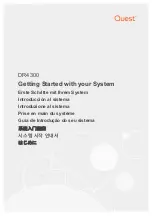
Installation (and Quick Start)
Unpacking and Inspection
15
Desktop LTO-1 and LTO-2 Tape Drive Quick Start
Use the following procedure to install desktop LTO-1 and LTO-2 tape drives. Print this page and
check each step as you complete it. If you need more information about a step, turn to the section
referenced in the step.
Unpacking and Inspection
Although drives are inspected and carefully packaged at the factory, damage may occur during
shipping. Follow these steps for unpacking the drive.
1.
Visually inspect the shipping containers and notify your carrier immediately of any damage.
2.
Place shipping containers on a flat, clean, stable surface; then carefully remove the contents. If
the equipment is damaged, notify your Certance representative.
3.
Always save the containers and packing materials for any future reshipment.
Internal Tape Drive Guidelines and Cautions
The following guidelines and cautions apply to handling and installing internal tape drives. Keep
them in mind as you install the drive.
•
Handle the drive by the sides rather than by the top cover to reduce the risk of dropping the
drive or damaging it during installation.
•
Internal drives contain some exposed components that are sensitive to static electricity. To
reduce the possibility of damage from static discharge, the drives are shipped in a protective
antistatic bag. Do not remove the drive from the antistatic bag until you are ready to install it.
•
Before you remove the drive from the antistatic bag, touch a metal or grounded surface to dis-
charge any static electricity buildup from your body.
❑
1.
Unpack the contents of your drive package, and check for damaged items.
See “Unpacking and Inspection” on page 15.
❑
2.
Review the drive’s default settings and change them if necessary:
• SCSI ID: 6
See“Setting the SCSI ID” on page 28.
❑
3.
Connect a SCSI interface cable to the drive.
See “Connecting a SCSI Cable” on page 29.
❑
4.
Check the SCSI termination.
See “Checking the SCSI Termination” on page 29.
❑
5.
Connect a power cable to the drive.
See “Connecting a Power Cord” on page 30.
❑
6.
Turn on the computer, turn on the desktop tape drive, and verify that the desktop tape
drive is operating properly.
❑
7.
If you intend to use your drive with Microsoft Windows Server 2003, Windows XP, or
Windows 2000, install the appropriate LTO driver.
See “Installing the LTO Driver” on page 30.
❑
8.
Register your tape drive.
See “Registering Your Tape Drive” on page 30.
















































